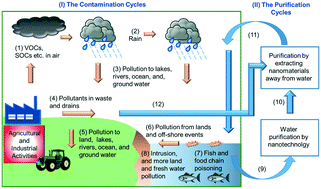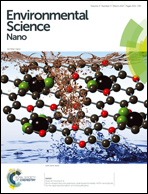Water purification: oil–water separation by nanotechnology and environmental concerns
Abstract
Organic pollutants from volatile organic compounds (VOCs), synthetic organic compounds (SOCs), oil spills, and waste disposal have significantly contaminated water and our food chain. The science and engineering of water purification, in particular oil–water separation, has attracted increasing attention in the past five years. As reviewed in this article, both organic chemistry and nanotechnology have been employed for oil–water separation. This can be achieved using materials with specific wettability. Three general approaches have been reported: 1) the filtration technique using specific wettability that only allows oil or water to penetrate, 2) the absorption method using porous sponges, fibers and aerogels that can selectively absorb oil or water, and 3) filtration or absorption technology that is switchable and controllable in functionality. On the other hand, the increased use of nanomaterials in water purification, sports equipment, and industrial and household products has raised concern about water contamination by nanoparticles. This concern will be discussed at the end of the review. The goals of this article are 1) to provide a comprehensive review about oil–water separation by nanotechnology and organic chemistry and 2) to increase the awareness of environmental concerns about using nanotechnology for water purification.

- This article is part of the themed collection: Environmental Science: Nano 2017 Most Downloaded Articles


 Please wait while we load your content...
Please wait while we load your content...